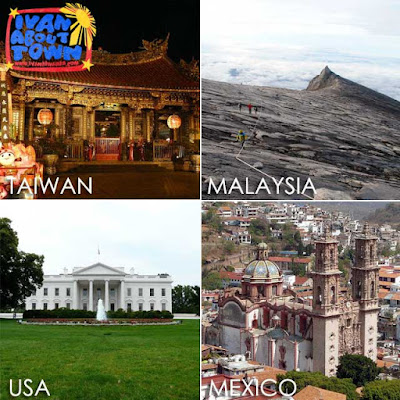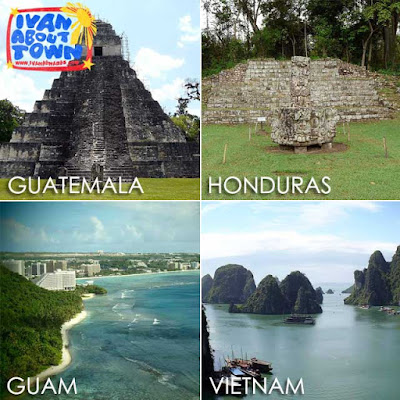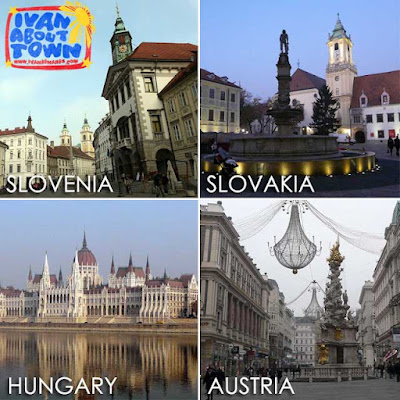
Visiting Europe is a dream for many. Thanks to the Schengen Agreement, you can visit most of Europe with a single visa called the Schengen visa.
There are twenty-six countries in the Schengen Area namely Austria, Belgium, Czech Republic, Denmark, Estonia, Finland, France, Germany, Greece, Hungary, Iceland, Italy, Latvia, Liechtenstein, Lithuania, Luxembourg, Malta, Netherlands, Norway, Poland, Portugal, Slovakia, Slovenia, Spain, Sweden and Switzerland. Although not part of the Schengen Area, you can also visit four microstates namely Andorra, Monaco, San Marino and the Vatican City that maintain open or semi-open borders with Schengen countries.
Update (02/12/2012): A Schengen visa will allow you to transit Romania within a period of five (5) days. From January 31, 2012, Bulgaria now allows visa-free entry to holders of Schengen visas with stays of up to three (3) months. Croatia temporarily allows holders of two or multiple entry Schengen visas to enter from January 1 to December 31, 2012.
Applying for a Schengen visa can be difficult at times for Philippine passport holders for reasons quite known to us. Note that there are rules on which embassy you should apply with for your visa. I've been to Europe on three separate occasions and had to apply with the Spanish, Portuguese and French Embassies respectively. Note also that the minimum processing period for a short stay visa is ten (10) working days and can take longer depending on the circumstances. So it's best to apply at least one month before your intended date of departure. Visa processing fees are also non-refundable so make sure you prepare the necessary documents to avoid visa refusal.
Where to Apply
If you are going to visit only one Schengen state, the visa application must be made at the embassy or consulate of that particular member state. If your trip will include more than one country, the visa application must be made at the embassy or consulate of the member state whose territory constitutes the main destination of the trip in terms of purpose or the length of stay.
One example, I had to attend an ICOMOS meeting in Portugal in 2010. Unfortunately, we no longer have a Portuguese Embassy in the Philippines. So I tried applying at the Dutch Embassy since Amsterdam was going to be my port of entry. Unfortunately, I was told that because my main purpose to visit Europe was a meeting in Portugal, I had to apply with the Portuguese Embassy which is in Jakarta, Indonesia. I tried calling the embassy there but the phone was on answering machine. The e-mail address in the website was bouncing.

After all those wasted long-distance calls, and because I had just a little over two weeks left before the meeting, I had no choice but to fly to Jakarta to personally apply for a visa at the Portuguese Embassy there. When the Schengen country you will visit does not have an embassy or consulate that issues visas in the Philippines, you will have to allot at least four weeks since your passport may have to be mailed to an embassy abroad.
The following are the Schengen states with embassies and consulates in the Philippines that issue Schengen visas. Some embassies represent other Schengen countries in the Philippines with regard to visa issuance. You can click on the links to read visa application procedures specific to the embassy:
Austria (plus Lithuania)
4/F Prince Building, 117 Rada Street
Legaspi Village, Makati City
Tel. No. (02) 8179191/8174992; Fax. No. (02) 8134238
Belgium (plus Hungary, Luxembourg and Slovenia)
6/F Don Jacinto Building, De la Rosa cor. Salcedo Streets
Legaspi Village, Makati City
Tel. No. (02) 8451869/72; Fax No. (02) 8452076
Czech Republic
Rufino Pacific Tower
6784 Ayala Avenue, Makati City
Tel. No. (02) 8111155; Fax No. (02) 8111020
Finland (plus Estonia)
21/F Far East Bank Center
Sen. Gil J. Puyat Avenue, Makati City
Tel. No. (02) 8915011/15; Fax No. (02) 8914107
France
16/F Pacific Star Building
Makati Ave. cor. Sen Gil Puyat Ave. Makati City
Tel. No. (02) 8576900; Fax No. (02) 8576951
Germany
25/F Tower 2, RCBC Plaza,
6819 Ayala Avenue, Makati City
Tel. No. (02) 7023000 / Fax No. (02) 7023015
Greece
12/F Sage House, 110 Rufino Street
Legaspi Village, Makati City
Tel. No. (02) 8174444/8173417; Fax No. (02) 8120202
Italy
6/F Zeta Building, 191 Salcedo Street
Legaspi Village Makati City
Tel. No. (02) 8924531/34; Fax No. (02) 8171436
The Netherlands (plus Poland)
26/F Equitable Bank Tower
8751 Paseo de Roxas, Makati City
Tel. No. (02) 7866655; Fax No. (02) 7866644
Norway (plus Denmark and Iceland)
21/F Petron Mega Plaza Building
358 Sen. Gil Puyat Avenue, Makati City
Tel. No. (02) 8863245/49; Fax No. (02) 8863244
Spain
5/F ACT Tower
135 Sen Gil Puyat Ave. Makati City
Tel. No. (02) 8183561/8183581/8185526; Fax No. (02) 8102885
Switzerland (plus Sweden)
24/F Equitable Bank Tower
8751 Paseo de Roxas, Makati City
Tel. No. (02) 7579001; Fax No. (02) 7573717
Scheduling a Visa Appointment
The appointment procedures vary per embassy. Again, you can click on the links which I've conveniently placed above to read visa application appointment and application procedures specific to each embassy. The links are self-explanatory. But if you have any questions, it's best to call the embassy for appointment procedures.
For the French Embassy, appointments may be set either (1) by phone at 8576924 between 2 to 4 p.m., Mon-Thur; or (2) via e-mail at visa.ambafrance.manille@gmail.com. I did mine via e-mail since the lines were quite busy during appointment hours. When e-mailing the embassy, provide the name of the applicant, e-mail address and/or contact number as well as the purpose of the trip. Remember that appointments made through e-mail must be confirmed either by an e-mail reply or by a phone call from the visa section. You will have to wait for this confirmation before you can proceed to the embassy.
Other embassies will require you to call service numbers with charges per minute or per call. You can find these charges in the embassy website. And make sure to have everything ready when you make the call so that you don't waste any time.
General Requirements
Check with the embassy you will be applying with for their specific requirements. But to give you an idea, when I applied with the French Embassy late last year, the following documents were required:
(1) Signed application form for Schengen visa with photo (35mm x 45mm, white background) plus 1 extra photo
(2) Valid passport (3 months validity from the end of approved duration stay) and photocopy of valid and former visas
(3) Cover letter explaining the purpose of your trip as well as dates and places to be visited
(4) Details about the trip:
(i) proof of accommodations (either hotel vouchers or if staying with a French resident: Attestation d’accueil plus copy of your host’s national identity card if EU citizen or residence permit if citizen of a country other than the EU);
(ii) Round trip flight ticket booking (please do not purchase your ticket unless your visa is granted)
(iii) Complete itinerary with departure and return dates
(iv) For family visit, proof of relationship (birth certificate, marriage certificate)
(5) Proof of employment (if any):
(i) Certificate of employment with monthly salary and leave of absence approved by employer
(ii) If self-employed, official business registration for current and previous year
(iii) For priests, nuns and missionaries, certificate from the Apostolic Nunciature and guarantee letter from French and Filipino congregation.
(6) Proof of income
(i) Income tax return from previous year, where applicable
(ii) Recent bank certification
(iii) Photocopy of the last three months statement of account of the same bank account
(7) Identity and marital status
(i) Photocopy of the first page of your valid passport and all relevant obtained visas
(ii) If married, photocopy of your mariage contract and birth certificate anthenticated by the NSO
(iii) If single, photocopy of your birth certificate authenticated by the NSO
(iv) For minors, notarized affidavit from one or both parents if they don’t travel with the child
(8) An international insurance (medical expenses and repatriation) covering the entire period of the person’s intended stay and valid for all Schengen states. Minimum coverage should be EUR30,000
Again, note that incomplete files may result to the refusal of the application. It's also best to prepare additional documents, particularly for proof of income, which may be requested for specific cases.
At the Embassy
On the day of your interview, make sure to be at the embassy at least thirty minutes before your scheduled appointment. You may not be allowed inside if you are late for your appointment. Also bring the exact amount for the visa fee. At the French Embassy, they require the exact amount in Philippine pesos and do not give change.
When I arrived at the French Embassy, I gave my name and appointment time to the guard who then checked it on their list. I was given a number and sat down in the waiting area for my number to be called. When your number is called, you proceed to the window for checking of documents and payment. You will then be asked to be seated again and wait for your name to be called.
When your name is called, you proceed to the designated window for your interview and submission of other documents. You will be asked about your trip, your purpose for going, your work and other pertinent questions which will help the consul decide whether you are qualified for a visa. First time travelers will have a difficult time since this raises alarm bells of the consul interviewing you. So you might want to get some passport stamps before applying for a Schengen visa. The rationale behind the questioning is for you to prove to the consul that you will return to the Philippines as stated in your submitted travel plans.
The consul may reject applicants as a result of the interview. If the consul is satisfied or will consider your application, they will collect your documents (except the passport) and proceed to record biometric data, particularly your fingerprints and a photograph that will appear on your visa (if granted). They will then issue you a slip which states the date and time that you will return. Remember that the French Embassy will not collect your passport. You will bring your passport with you on the scheduled date. Note also that this is not an assurance that your visa is granted.
When you return to the French Embassy on the scheduled date for claiming your visa, you will submit your slips and wait for your name to be called. Those called first are applicants whose visas have been refused. If it is refused, you will be asked to receive a letter from the Ministry of Foreign Affairs stating why your visa was refused. Those whose visas are approved will have to wait a little longer as the staff affix the visa sticker to your passport. Again, this is the procedure of the French Embassy. Each embassy or consulate has different application procedures.
Honorary Consulates and Embassies Abroad
Unfortunately, honorary consulates are not authorized to issue Schengen visas. But they can point you towards the right direction. Here are the contact details of honorary consulates or Schengen states with embassies outside the Philippines:
Latvia
2253 Aurora Boulevard (Tramo), Pasay City
Tel. No. (02) 8332551/52-55; Fax No. (02) 8332358
E-mail: coltrans@skyinet.net
Malta
Room 1242, Megaplaza Building,
ADB Avenue cor. Garnet Road
Ortigas Center, Pasig City
Tel. No. (02) 6877245/8937042; Fax No. (02) 6877245
E-mail: maltaconsul.manila@gov.mt
Portugal
Jl. Indramayu nº 2A.
Jakarta Pusat 10310, Indonesia
Tel. No. (0062 21) 31908030, Consular (0062 21) 3156 728; Fax No. (0062 21) 3190 8031
Slovakia
2nd Floor GCH Building
Tres Borces Street Mabolo
Cebu City 6000 Philippines
Tel. No. (032) 2329445
E-mail: srconsulatecebu@yahoo.com






























